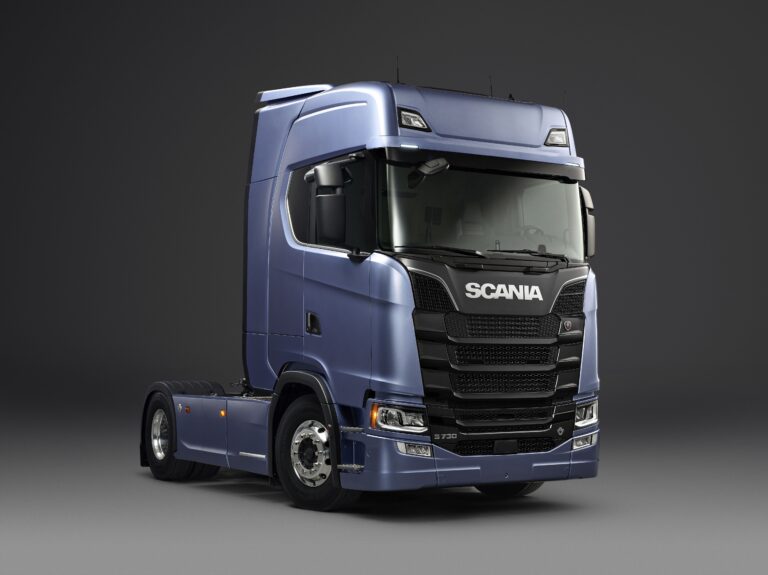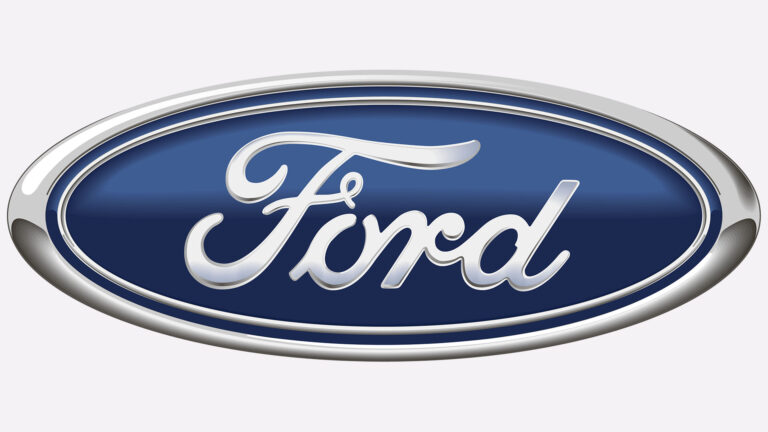2003 Jeep Liberty Sport: A Deep Dive into a Compact SUV Icon
2003 Jeep Liberty Sport: A Deep Dive into a Compact SUV Icon cars.truckstrend.com
Introduction
In the early 2000s, as the compact SUV market began to truly explode, Jeep, a brand synonymous with rugged capability, introduced a new contender to replace the aging Cherokee (XJ): the Jeep Liberty. Among its initial offerings, the 2003 Jeep Liberty Sport quickly emerged as a popular choice, embodying a crucial balance between urban practicality, family-friendly utility, and the legendary off-road prowess that defines the Jeep nameplate. More than just a simple utility vehicle, the 2003 Liberty Sport represented a pivotal moment for Jeep, attempting to appeal to a broader audience while retaining its core adventurous spirit. It became a ubiquitous sight on roads and trails alike, a testament to its blend of distinctive styling, versatile performance, and surprising affordability, making it a relevant and often sought-after vehicle on the used car market even today.
2003 Jeep Liberty Sport: A Deep Dive into a Compact SUV Icon
Design and Aesthetics: Unmistakably Jeep
The 2003 Jeep Liberty Sport, like its siblings, broke away from the boxy, utilitarian design of its Cherokee predecessor, adopting a more modern and rounded aesthetic. Yet, it retained unmistakable Jeep DNA.
Exterior:
The most striking feature of the 2003 Liberty Sport’s exterior is its departure from the traditional square headlights, opting instead for large, circular headlamps that gave it a friendly yet assertive face. This was complemented by the iconic seven-slot grille, a non-negotiable element of any Jeep. The body featured pronounced wheel arches, hinting at its off-road capabilities, and a unique rear-mounted spare tire, which swung out to the side rather than up, a practical touch that also added to its rugged persona. The Sport trim typically came with 16-inch steel wheels as standard, though alloy wheels were a popular option, further enhancing its appeal. Its relatively compact footprint made it maneuverable in city traffic, yet its ample ground clearance suggested readiness for adventure.
Interior:
Inside, the 2003 Liberty Sport prioritized functionality and practicality. The cabin design was straightforward and robust, with durable plastics and cloth upholstery typical of the Sport trim. While not luxurious, the materials were chosen to withstand the rigors of daily use and occasional off-road excursions. The dashboard layout was intuitive, with large, easy-to-read gauges and controls that were simple to operate, even with gloves on. Seating was comfortable for four adults, with adequate legroom in the front and decent space in the rear for its class. Cargo space was respectable, especially with the rear seats folded down, making it suitable for hauling gear, groceries, or sports equipment. The side-opening rear gate and flip-up glass were practical features that added to its utility.
Powertrain and Performance: A Blend of Power and Capability
The 2003 Jeep Liberty Sport offered a choice of engines and robust drivetrain options, catering to different needs and preferences.

Engine Options:
- 2.4L PowerTech Inline-4: This was the standard engine for the Sport trim. Producing 150 horsepower and 165 lb-ft of torque, it was adequate for daily commuting and lighter duties. It was typically paired with a 5-speed manual transmission, though a 4-speed automatic was optional. While offering slightly better fuel economy, its performance could feel strained when fully loaded or tackling steep inclines.
- 3.7L PowerTech V6: This was the more popular and often preferred engine, standard on higher trims but a widely chosen option for the Sport. Delivering a more robust 210 horsepower and 235 lb-ft of torque, the V6 provided significantly better acceleration, towing capability, and overall driving confidence. It was almost exclusively paired with the 4-speed automatic transmission. This engine cemented the Liberty’s reputation for being capable both on and off the pavement.

Transmission Options:
- 5-Speed Manual: Available with the 2.4L I4, offering more driver engagement.
- 4-Speed Automatic: Standard with the 3.7L V6 and optional with the 2.4L I4, providing smooth and convenient shifts.
.jpg?t=166810912885)
Drivetrain:
The 2003 Liberty Sport offered serious off-road credentials thanks to its available 4×4 systems:
- 2WD (Rear-Wheel Drive): Standard, providing a traditional SUV driving experience and slightly better fuel economy.
- Command-Trac Part-Time 4WD: This system was a popular option for the Sport. It allowed drivers to select between 2WD, 4-High (for slippery surfaces), and 4-Low (for serious off-road crawling), but 4-High and 4-Low were not to be used on dry pavement. This system was rugged and capable, ideal for those who truly ventured off-road.
- Selec-Trac Full-Time 4WD: Available as an upgrade, this more sophisticated system offered 2WD, 4-High Part-Time, 4-High Full-Time (which could be used on dry pavement, automatically distributing power as needed), and 4-Low. Selec-Trac offered greater versatility and peace of mind in varying conditions.
On-Road Handling and Off-Road Capability:
On the road, the 2003 Liberty Sport offered a relatively comfortable ride for a compact SUV of its era, thanks to its independent front suspension and multi-link rear suspension. Steering was reasonably responsive, and body roll was controlled, making it a manageable daily driver. Off-road, especially with the V6 engine and a 4WD system, the Liberty Sport truly shined. Its solid axle-like independent front suspension, good ground clearance, and robust 4WD systems (especially Command-Trac or Selec-Trac with 4-Low) allowed it to tackle trails, mud, and light rock crawling that would leave many competitors stranded.
Features and Trim Levels: The Sport’s Core Appeal
The "Sport" trim level of the 2003 Jeep Liberty was designed to be the volume seller, offering a compelling blend of essential features and value.
Standard Features for 2003 Liberty Sport:
- Comfort & Convenience: Air conditioning, power windows, power door locks, power mirrors, remote keyless entry, cloth upholstery, tilt steering column, AM/FM stereo with CD player and four speakers.
- Safety & Security: Dual front airbags, anti-lock brakes (ABS) were optional, Sentry Key engine immobilizer.
- Exterior: 16-inch steel wheels (alloy wheels optional), black side moldings, body-color grille, fog lamps.
- Utility: Roof rack side rails, full-size spare tire.
The Sport trim provided a solid foundation, allowing buyers to add desirable options like the V6 engine, automatic transmission, 4WD, cruise control, and alloy wheels without moving to the more expensive Limited trim. Its appeal lay in its ability to deliver the core Jeep experience at a more accessible price point.
Safety Features: Meeting the Standards of its Time
The 2003 Jeep Liberty Sport was equipped with safety features standard for its class and era.
- Airbags: Dual front airbags were standard, providing protection for the driver and front passenger.
- Brakes: Four-wheel anti-lock brakes (ABS) were optional on the Sport trim but highly recommended for improved stopping performance, especially in emergency situations.
- Body Structure: The Liberty featured a unibody construction with integrated frame rails, designed to offer a balance of rigidity for off-road durability and crash protection.
- Crash Test Ratings: The 2003 Liberty generally performed reasonably well in government (NHTSA) crash tests for its time, often receiving four or five stars for front and side impact protection.
Ownership Experience and Common Issues
Owning a 2003 Jeep Liberty Sport can be a rewarding experience, especially for those who appreciate its unique blend of attributes. However, like any vehicle of its age, it comes with its own set of considerations.
Pros:
- Genuine Off-Road Capability: A standout feature, particularly with the 4WD systems, allowing it to go where many compact SUVs cannot.
- Distinctive Styling: Its unique look helps it stand out from the crowd.
- Comfortable Ride: Surprisingly compliant ride quality for a vehicle with off-road aspirations.
- Practicality: Good cargo space and a versatile interior.
- Affordability: Represents excellent value on the used market.
- Towing Capacity: The V6 engine offers a respectable towing capacity of up to 5,000 lbs.
Cons/Common Issues:
- Fuel Economy: The 3.7L V6 can be thirsty, especially with the 4-speed automatic and 4WD.
- Rust: This is a significant concern, particularly in regions with road salt. Common areas include rocker panels, rear quarter panels, and the subframe.
- Window Regulators: A notorious weak point. The plastic components in the power window regulators are prone to breaking, causing windows to fall into the door or become inoperable.
- Suspension Components: Bushings, ball joints, and tie rod ends can wear out over time, leading to clunking noises or loose steering.
- Cooling System: Issues with the radiator or water pump can occur.
- Transmission Issues: While generally robust, the 4-speed automatic can develop issues at higher mileages if not properly maintained.
- Electrical Gremlins: Minor electrical issues (e.g., dashboard lights, sensor failures) can sometimes arise.
Maintenance Tips for Longevity:
- Regular Fluid Changes: Adhere to the manufacturer’s schedule for engine oil, transmission fluid, transfer case fluid (if 4WD), and differential fluids.
- Rust Prevention: Regularly wash the undercarriage, especially after driving in salty conditions. Consider rust-proofing treatments.
- Inspect Window Regulators: Be proactive and address any sluggish window operation. Aftermarket metal replacement parts are available.
- Suspension Checks: Have suspension components inspected during routine maintenance and replace worn parts promptly.
- Cooling System Maintenance: Flush coolant periodically and inspect hoses and radiator for leaks.
- Tire Rotation and Alignment: Essential for even tire wear and proper handling.
Buying a Used 2003 Jeep Liberty Sport: Practical Advice
For anyone considering a used 2003 Jeep Liberty Sport, a thorough inspection is crucial.
- Rust Check: This is paramount. Inspect rocker panels, wheel wells, door bottoms, and the frame rails carefully. Minor surface rust is manageable, but extensive rot is a red flag.
- Test Drive:
- Engine: Listen for unusual noises (knocks, ticks, squeals). Check for smooth acceleration.
- Transmission: Ensure smooth shifts, no slipping, or harsh engagement. Test 4WD engagement (if applicable) in a safe, appropriate area.
- Suspension: Listen for clunks, squeaks, or excessive bounciness over bumps.
- Brakes: Check for pulsating or pulling.
- Windows: Operate all power windows several times to check for regulator issues.
- Electrical: Test all lights, radio, AC, and other accessories.
- Fluid Leaks: Check under the vehicle for any signs of fluid leaks.
- Maintenance Records: Ask for service history to gauge how well the vehicle has been maintained.
- Pre-Purchase Inspection (PPI): Strongly recommended. Have a trusted mechanic (preferably one familiar with Jeeps) inspect the vehicle before purchase. They can identify potential issues that an untrained eye might miss.
- Mileage vs. Condition: Lower mileage is generally better, but a higher-mileage vehicle with excellent maintenance records can be a better buy than a low-mileage one that’s been neglected.
2003 Jeep Liberty Sport Price Table
Please note that these prices are estimates and can vary significantly based on geographic location, vehicle condition, mileage, optional features (like 4WD, V6 engine), and local market demand.
| Category | Description | Estimated Price Range (USD) |
|---|---|---|
| Original MSRP | Base price for a new 2003 Jeep Liberty Sport (2WD, I4) | $18,000 – $21,000 |
| Original MSRP for a new 2003 Jeep Liberty Sport (4WD, V6, common options) | $22,000 – $26,000 | |
| Used Market Value | ||
| Excellent Condition | Well-maintained, low mileage (under 120k), minimal rust, all systems fully functional. | $4,000 – $7,000+ |
| Good Condition | Regularly maintained, moderate mileage (120k-180k), some minor wear, few to no immediate repairs needed. | $2,500 – $4,000 |
| Fair Condition | Higher mileage (180k-220k+), visible wear and tear, some maintenance or repairs may be needed soon (e.g., suspension, minor rust). | $1,000 – $2,500 |
| Poor Condition | High mileage, significant cosmetic or mechanical issues, extensive rust, likely needs substantial repairs. | Under $1,000 |
Factors that increase value: 4WD (especially Selec-Trac), 3.7L V6 engine, low mileage, excellent service history, minimal rust, functioning power windows/AC.
Factors that decrease value: Excessive rust, non-functioning power windows, major mechanical issues, high mileage, 2WD (for buyers seeking off-road capability).
Frequently Asked Questions (FAQ)
Q1: Is the 2003 Jeep Liberty Sport good off-road?
A1: Yes, especially models equipped with the 3.7L V6 engine and a 4WD system (Command-Trac or Selec-Trac) with low range. Its solid ground clearance and robust 4WD systems make it surprisingly capable for moderate to difficult trails, mud, and snow.
Q2: What’s the fuel economy like for a 2003 Jeep Liberty Sport?
A2: Fuel economy is not its strongest suit, particularly with the 3.7L V6 and automatic transmission. Expect around 15-17 MPG in the city and 19-21 MPG on the highway for the V6 4×4. The 2.4L I4 offers slightly better figures, typically 18-20 MPG city and 22-24 MPG highway.
Q3: Are there common problems with the 2003 Liberty Sport I should be aware of?
A3: Yes, the most common issues include rust (especially on rocker panels and rear quarter panels), power window regulator failures, worn suspension components (ball joints, control arm bushings), and occasional cooling system issues. The 3.7L V6 is generally robust but can consume oil at higher mileages.
Q4: What is the towing capacity of the 2003 Jeep Liberty Sport?
A4: With the 3.7L V6 engine and proper towing equipment, the 2003 Jeep Liberty Sport has a maximum towing capacity of up to 5,000 pounds. The 2.4L I4 has a significantly lower capacity, usually around 2,000 pounds.
Q5: Is the 2003 Jeep Liberty Sport a reliable used SUV?
A5: When properly maintained, the 2003 Liberty Sport can be reasonably reliable. However, its age means that wear and tear items will need attention, and some common issues (like window regulators and rust) are well-known. A pre-purchase inspection is highly recommended to assess its current condition.
Q6: What’s the difference between Command-Trac and Selec-Trac 4WD systems?
A6:
- Command-Trac (Part-Time 4WD): Offers 2WD, 4-High, and 4-Low. 4-High and 4-Low are strictly for slippery or off-road conditions and should not be used on dry pavement.
- Selec-Trac (Full-Time 4WD): A more advanced system that adds a "4-High Full-Time" mode. This mode can be used on dry pavement as it allows for differential action between the front and rear axles, making it more versatile for varying road conditions. It also includes 2WD, 4-High Part-Time, and 4-Low.
Conclusion
The 2003 Jeep Liberty Sport stands as a testament to Jeep’s enduring commitment to capability, even in a more compact and urban-friendly package. It carved out its niche by offering a blend of distinctive styling, respectable on-road manners, and genuine off-road prowess that few competitors could match. While it has its quirks and common issues, particularly related to rust and window regulators, its rugged charm, versatile utility, and accessible price point on the used market continue to make it an attractive option for those seeking an affordable SUV with a spirit of adventure. For the right owner willing to address its potential foibles, the 2003 Jeep Liberty Sport remains a loyal and capable companion, ready for daily commutes and weekend excursions alike.





